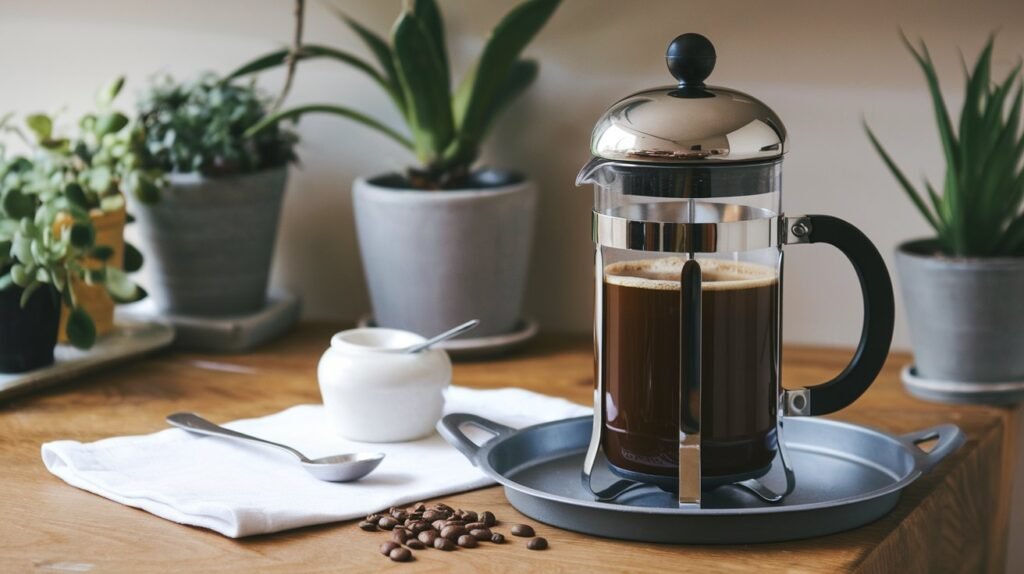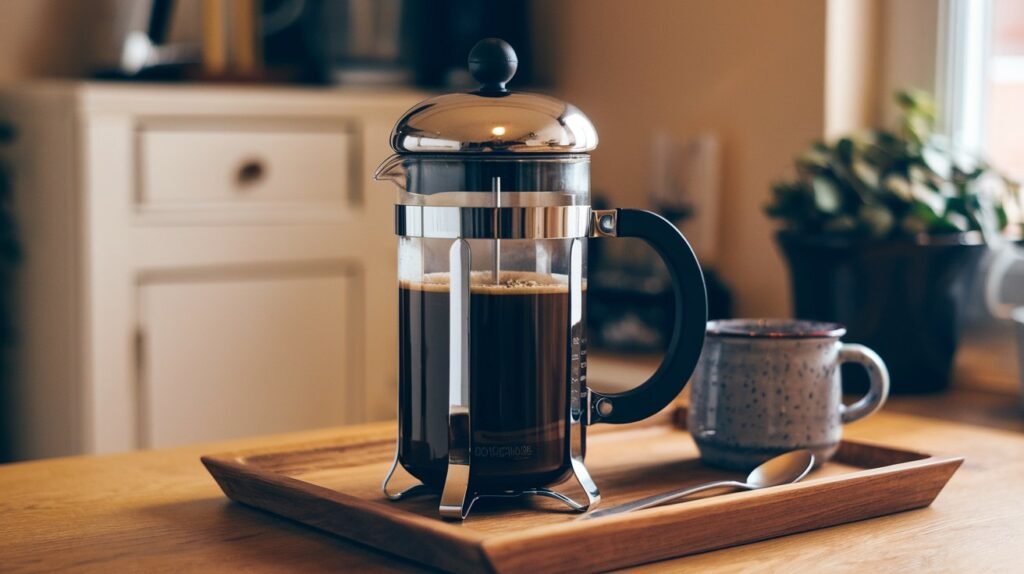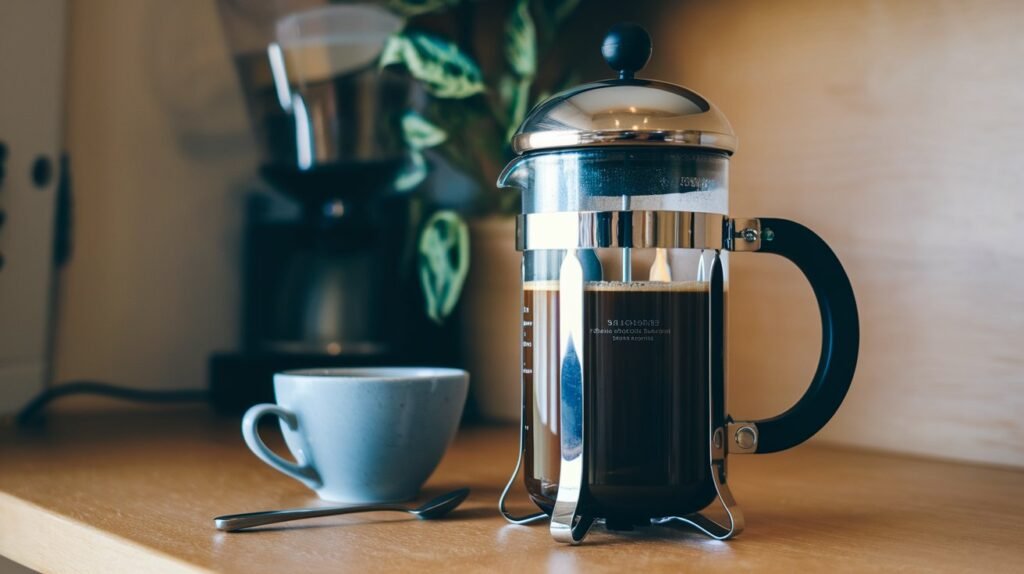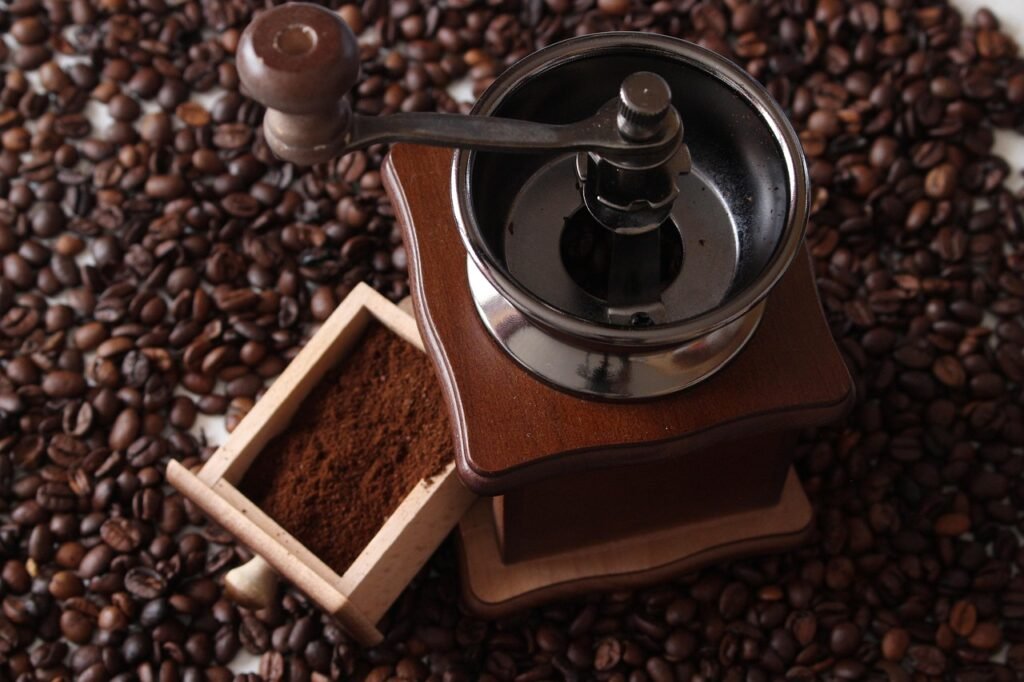
Artisanal Rituals for a Memorable Customer Experience
How can brands create a more balanced and memorable customer experience by blending artisanal product quality with thoughtful everyday rituals that keep people coming back?

TL;DR:
Are you still brewing your coffee the old-fashioned way, or have you tried the increasingly popular cold brew? While both methods offer unique tastes and experiences, understanding their key differences can elevate your coffee game. Whether you’re after a smooth, low-acid beverage or a robust, quick coffee brew, each technique has specific advantages worth exploring. Dive into this comparison to unveil the crucial distinctions between cold brew and regular coffee, from brewing time to flavor profiles and caffeine content.
Cold brew coffee is made by steeping coarsely ground coffee beans in room temperature or cold water for an extended period, typically 12 to 24 hours. This slow extraction process allows for a gradual release of flavors and essential oils, resulting in a smooth and less acidic brew. The recommended coffee-to-water ratio for cold brew ranges from 1:4 to 1:8. You can use tools such as a French press, mason jar, or specialized cold brew maker to prepare it.
Regular coffee, in contrast, is brewed quickly at high temperatures, around 200°F, using methods like drip machines, French presses, or espresso makers. This quick process extracts a wide range of compounds due to the high temperature. Regular coffee usually has a coffee-to-water ratio between 1:16 and 1:20, requiring less coffee per unit of water compared to cold brew. The grind size for regular coffee can vary depending on the method but is generally finer than that used for cold brew.
| Aspect | Cold Brew | Regular Coffee |
|---|---|---|
| Brewing Time | 12 to 24 hours | Few minutes |
| Temperature | Room temperature or cold | ~200°F |
| Grind Size | Coarse | Fine to medium |
| Coffee-to-Water Ratio | 1:4 to 1:8 | 1:16 to 1:20 |
Home-roasted coffee offers significant advantages for both types. Freshly roasted beans ensure optimal flavor and aroma, leading to a more customized and superior coffee experience. Home roasting also provides control over the roast level, affecting the acidity, body, and overall taste of the coffee. This allows for a tailored brew regardless of the brewing method.
Cold brew coffee often has a smoother, sweeter, and less acidic taste. The slow extraction minimizes oxidation and degradation of coffee compounds, resulting in a bolder and more intense flavor. This method retains the natural sweetness and reduces bitterness, making it a preferred choice for those who favor a milder coffee experience.
Regular coffee is known for its rich, aromatic, and sometimes complex flavor profile. The hot water extraction brings out sharper, more bitter notes. The flavor can vary significantly based on the roasting level and brewing method, offering a diverse range of taste experiences.
Home-roasted coffee beans can significantly enhance the flavor of both cold brew and regular coffee. Freshly roasted beans ensure optimal flavor and aroma, providing a more tailored coffee experience. By controlling the roast level, home roasters can adjust the acidity, body, and overall taste of the coffee. Whether you prefer the smooth, bold flavor of cold brew or the rich, aromatic profile of regular coffee, home-roasted beans elevate the experience to a new level of quality and satisfaction.
Cold brew coffee generally contains more caffeine per serving than regular coffee. This is due to the higher coffee-to-water ratio used during the brewing process, which can range from 1:4 to 1:8. The extended steeping time, often 12 to 24 hours, allows for a more concentrated extraction of caffeine and other compounds. When undiluted, cold brew concentrate can be extremely potent, sometimes even stronger than espresso. To make it more palatable, many coffee shops dilute cold brew with water before serving. This results in a beverage that still carries a substantial caffeine kick but is more balanced and easier to consume.
Regular coffee is brewed with hot water, which is highly efficient at extracting caffeine from the coffee grounds. Despite this efficiency, the coffee-to-water ratio is lower, typically between 1:16 and 1:20. This means that regular coffee may have more caffeine per ounce, but the overall concentration is less compared to cold brew. Factors such as brewing method, grind size, and extraction time can also influence the caffeine content. For instance, espresso, which uses a fine grind and short extraction time, has a high caffeine concentration but is consumed in smaller quantities.

Home-roasted coffee offers superior control over caffeine content. By selecting the roast level, grind size, and brewing method, coffee enthusiasts can tailor their brew to achieve the desired caffeine kick. This level of customization ensures a more personalized and satisfying coffee experience, whether you prefer the robust potency of cold brew or the balanced flavor of regular coffee.
Cold brew coffee has significantly lower acidity and bitterness compared to hot brewed coffee. This is due to the use of cold water in the brewing process. The cold brewing method extracts fewer acids from the coffee beans, resulting in a smoother coffee with a higher pH level. This makes cold brew a preferred option for those who enjoy a less acidic taste.
Regular coffee, brewed at high temperatures, extracts more acids from the coffee grounds. The hot water extraction results in a sharper, more acidic taste. The higher acidity level is due to the efficient breakdown of acids during the rapid brewing process. This sharpness and acidity can be appealing to those who enjoy a more vibrant and intense coffee flavor.
Home-roasted coffee can be adjusted to achieve the desired acidity level, offering a more personalized coffee experience. By controlling the roast profile and brewing parameters, home roasters can influence the acidity of both cold brew and regular coffee. This flexibility allows for a tailored coffee experience that meets individual preferences.
Both cold brew and regular coffee offer similar health and energy benefits. These include increased alertness, improved mood, and enhanced physical performance. Both types contain caffeine, which stimulates the central nervous system and helps improve focus and energy levels.
Cold brew is gentler on the stomach due to its lower acidity. This makes it a better choice for those with sensitive stomachs or acid reflux. The cold brewing process extracts fewer acids and irritants, resulting in a smoother beverage easier on the digestive system. Additionally, cold brew has a balanced ratio of caffeine and antioxidants, providing a quick energy boost without the sharp spike in acidity that often accompanies hot brewed coffee.
Home-roasted coffee can offer additional health advantages by being free of additives and preservatives. This ensures a purer coffee experience, potentially reducing the intake of harmful chemicals. Home-roasting also allows for the selection of high-quality beans, leading to a fresher and more nutritious cup of coffee. Whether brewed as cold brew or regular coffee, home-roasted beans can elevate both the taste and health benefits of your daily cup.
Cold brew coffee is highly versatile and can be used in a variety of mixed drinks. One popular variant is nitro cold brew, which is infused with high-pressure nitrogen to create a frothy texture while reducing bitterness and acidity. Cold brew concentrate can also be diluted to taste, making it suitable for different preferences and recipes. This adaptability allows cold brew enthusiasts to enjoy their coffee in numerous ways, from a simple iced coffee to more complex concoctions.
Regular coffee is typically consumed as is or with standard additives like cream and sugar. Its versatility lies in the various brewing methods that can be employed, such as drip, French press, and espresso. Each method offers a unique flavor profile and strength, allowing coffee drinkers to customize their experiences. While regular coffee may not be as adaptable in mixed drinks as cold brew, it still provides a range of options through different preparation techniques and additives.
Home-roasted coffee can be tailored to suit various brewing methods and preferences, enhancing its versatility. By controlling the roast level and grind size, home roasters can optimize their coffee beans for both cold brew and regular coffee preparations. This level of customization ensures a superior coffee experience, allowing for a broader range of flavors and strengths that cater to individual tastes.

Cold brew coffee boasts a longer shelf life compared to regular coffee. When stored in the fridge, cold brew can last up to two weeks without losing its flavor or quality. Cold brew concentrate, which is more potent, can remain fresh for a few days to a week and a half if kept in an airtight container. This extended shelf life makes cold brew a convenient option for those who prefer to prepare their coffee in advance.
Regular coffee has a much shorter shelf life. Once brewed, it should be consumed within a few hours to maintain its optimal flavor and freshness. As the coffee sits, it begins to oxidize and lose its aromatic compounds, resulting in a stale taste. This rapid degradation necessitates immediate consumption or disposal, limiting its convenience for long-term storage.
By following these storage tips, home-roasted coffee can maintain its quality and freshness, providing a superior coffee experience whether used for cold brew or regular coffee.
In the debate of cold brew vs regular coffee, both have their own unique qualities. Cold brew offers a smooth, less acidic taste and lasts longer in the fridge. Regular coffee gives you a quick, aromatic cup with a rich flavor. The choice between them depends on your taste, time, and how sensitive your stomach is to acidity. Whether you prefer the cool, mellow taste of cold brew or the warm, robust flavor of regular coffee, both can give you that caffeine kick to start your day. In the end, the best coffee is the one you enjoy most!
Cold brew is made with cold water over 12-24 hours, while regular coffee uses hot water and brews in minutes.
Cold brew often has more caffeine per cup because it uses more coffee grounds.
Cold brew is usually gentler on stomachs because it’s less acidic than regular coffee.
Yes! You can make both at home. Cold brew needs more time but is simple to prepare.
Cold brew wins for storage – it lasts up to 2 weeks refrigerated, while regular coffee is best fresh.

How can brands create a more balanced and memorable customer experience by blending artisanal product quality with thoughtful everyday rituals that keep people coming back?

Independent coffee shops have always been about more than caffeine—they’re hubs of creativity, connection, and care. As café culture continues to evolve, new trends are

Introduction Independent cafes win when they feel like the neighborhood’s living room and operate with the discipline of a great kitchen. Below is a quick

Discover how top specialty coffee brands create lasting loyalty through storytelling, sourcing, and community connection. Real tips from 6 industry experts.

Discover the ultimate showdown between two beloved coffee brewing methods: the French press and Chemex. Explore how each technique caters to distinct palates, with the French press delivering bold flavors and the Chemex presenting a bright, clean taste.

Unlock the secrets to brewing the perfect cup of coffee with our comprehensive guide on using a coffee scale. Discover how precise measurements enhance flavor and consistency while eliminating bitterness.

Discover how water temperature plays a vital role in brewing the perfect cup of coffee. This article delves into the ideal temperature range of 195°F to 205°F for optimal flavor extraction, enhancing the enjoyment of high-quality beans.

Discover the world of curated specialty coffee bundles, perfect for enthusiasts seeking quality and craftsmanship. This article explores the benefits of ethically sourced, small-batch beans from brands like Equipoise Coffee, offering diverse flavor profiles that elevate your brewing experience.

Discover the art of manual brewing to elevate your coffee experience! This article explores various techniques like pour-over, French press, and AeroPress, revealing how they enhance flavor and your connection to every cup.